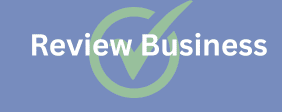Several well-known brands that are part of everyday consumer and business lives use the SaaS model. Below, you’ll learn more about some companies that sell software as a service and what sales models they use. Watch now:
Salesforce
Salesforce is one of the major players europe cell phone number list in the global SaaS market, according to the SaaS Global Market Report .
The company was a pioneer in this market, offering subscription-based CRM software for businesses to manage their relationships with their audiences since 1999. That move paved the way for giants like Adobe and Microsoft to join the SaaS movement as well.
Salesforce currently has the market-leading CRM platform, among other marketing, sales, and BI solutions. Plans start at $25/month per user on an annual basis.
Netflix
Netflix is a benchmark in streaming what are the main marketing trends ? multimedia content. Not only does it offer a platform with several films and series, but it also invests in original productions that compete with other Hollywood productions.
One of the great differentials of its SaaS is the personalized recommendation system , which is based on Machine Learning and seeks to facilitate the user’s choice among so many titles in the catalog.
The company offers subscriptions ranging from MX$139 to MX$266 pesos —in Mexican territory—, which vary depending on the quality of the video and the number of users who can consume content simultaneously.
It is also possible to create an account and subscribe to the platform in the self-service model.
Mailchimp
Mailchimp has one of the most sault data successful freemium models in the SaaS market . After 8 years of operating with only paid plans, the company adopted the freemium model and the number of users skyrocketed.
Although it has established itself as an email marketing tool, today Mailchimp presents itself as an all-in-one marketing platform , that is, with everything a company needs to grow.
On the free plan, you can create an account with up to 2,000 contacts. Paid plans start at $55 per month and include advanced features.
Slack
Slack is a business communications app that offers features like topic-based chat rooms, private groups, and direct messages.
In this way, the application prevents communication from being dispersed across multiple channels , which is essential to avoid noise, bottlenecks and enhance team collaboration.
Slack also uses the freemium model, offering a free version with the basics of the platform and paid plans starting at US$4 per month on an annual basis.
How to analyze the results of a SaaS model?
A SaaS company needs to monitor its results to improve strategies and generate more returns, just like any other type of business. However, in that model, there are some specific metrics to evaluate sales performance.
Next, we will see what are the main indicators that you should take care of:
MRR (Monthly Recurring Revenue)
MRR stands for monthly recurring revenue . It is one of the main metrics to evaluate the health of the business in the SaaS model , as it measures the sum of all recurring revenues originating from service subscriptions.
The MRR is for the entrepreneur to have greater predictability about the income of the month and to plan their strategies and costs in a way that does not harm their financial health.
The calculation is simple: just multiply the number of subscribers by the subscription rate . However, it is important to subtract churn from that value – the impact of customer cancellations on revenue – and add new sales. This way, you can get a true picture of future revenue.
Churn Rate
Churn Rate is the rate at which customers cancel or abandon their service. This metric reveals the number of customers, relative to your base, who have abandoned your service.
With that information, you can identify the impact on billing , but also raise warning alarms when the rate is too high and shows there is a problem with customer loyalty.
To calculate the cancellation fee, as it may also be called, simply divide the number of customers who cancelled the service by the number of customers at the beginning of the month. To get the percentage, multiply the result by 100.
CAC (Customer Acquisition Cost)
CAC is the metric that shows the customer acquisition cost , that is, how much the company is investing to gain each new customer.
That metric, compared to LTV, will help you understand whether your investments are paying off or are too high relative to your performance.
The CAC calculation should divide the sum of marketing and sales investments by the number of customers acquired in a given period.
LTV (Customer Lifetime Value)
LTV is the customer lifetime value , that is, how much money your customer leaves with your company while purchasing your products or subscribing to your services.
Based on your LTV history, you can have more predictability about future revenues, as well as compare to CAC to see if you’re spending too much relative to the return you’re getting.
There are different ways to calculate LTV. A simple way to calculate it is as follows: (Annual revenue per customer × customer relationship in years) – Customer acquisition cost (CAC).
